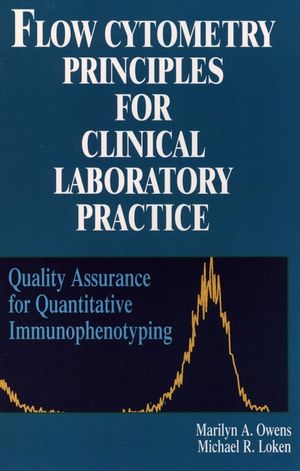Flow Cytometry Principles for Clinical Laboratory Practice: Quality Assurance for Quantitative ImmunophenotypingISBN: 978-0-471-02176-6
Paperback
228 pages
December 1994
 This is a Print-on-Demand title. It will be printed specifically to fill your order. Please allow an additional 10-15 days delivery time. The book is not returnable.
|
||||||
FLOW CYTOMETRY PRINCIPLES FOR CLINICAL LABORATORY PRACTICE
Quality Assurance for Quantitative Immunophenotyping
Marilyn A. Owens and Michael R. Loken
Flow Cytometry Principles for Clinical Laboratory Practice is aninvaluable benchtop reference and introduction for first-time usersof flow cytometry in clinical diagnostic laboratories. This manualprovides authoritative coverage of accepted methods, qualitycontrols, and standards for the cytometric analysis of clinicalsamples with particular relevance to CD4+ lymphocytes. CD4+lymphocyte determination by immunophenotyping is the standardmethod for evaluating the status of HIV infection, and the singlemost frequent application of flow cytometry in a diagnosticsetting.
Flow Cytometry Principles for Clinical Laboratory Practice willappeal to clinical laboratory technologists, medical practitioners,and cytometry lab directors in their role as instructors of newpersonnel. In addition, it is a valuable resource for clinical andbiomedical researchers, establishing quantitative cytometricsystems for studies in immunology and hematology.
Quality Assurance for Quantitative Immunophenotyping
Marilyn A. Owens and Michael R. Loken
Flow Cytometry Principles for Clinical Laboratory Practice is aninvaluable benchtop reference and introduction for first-time usersof flow cytometry in clinical diagnostic laboratories. This manualprovides authoritative coverage of accepted methods, qualitycontrols, and standards for the cytometric analysis of clinicalsamples with particular relevance to CD4+ lymphocytes. CD4+lymphocyte determination by immunophenotyping is the standardmethod for evaluating the status of HIV infection, and the singlemost frequent application of flow cytometry in a diagnosticsetting.
Flow Cytometry Principles for Clinical Laboratory Practice willappeal to clinical laboratory technologists, medical practitioners,and cytometry lab directors in their role as instructors of newpersonnel. In addition, it is a valuable resource for clinical andbiomedical researchers, establishing quantitative cytometricsystems for studies in immunology and hematology.



